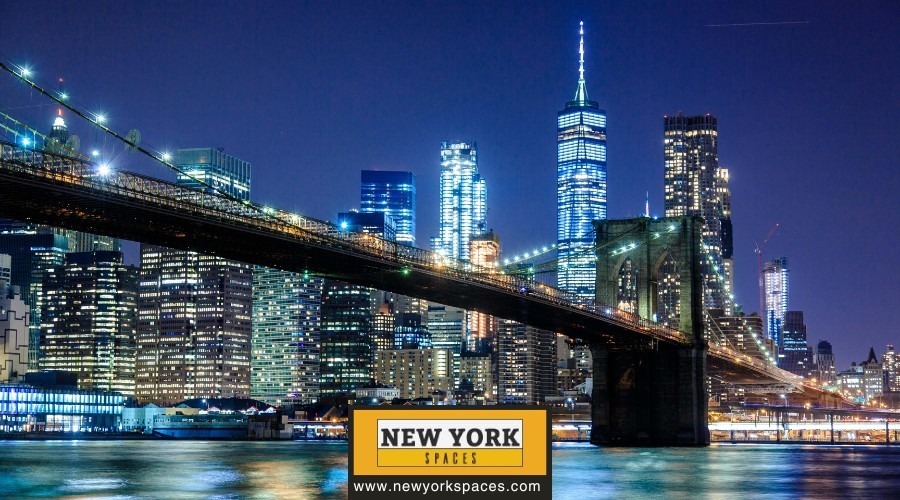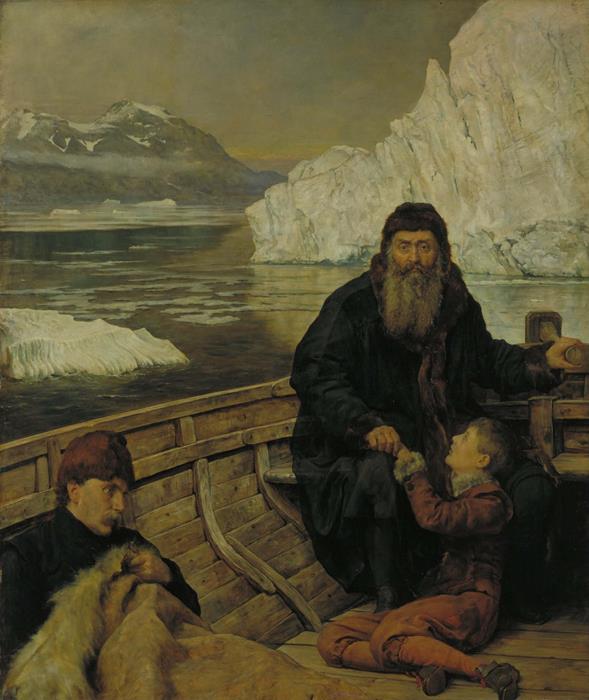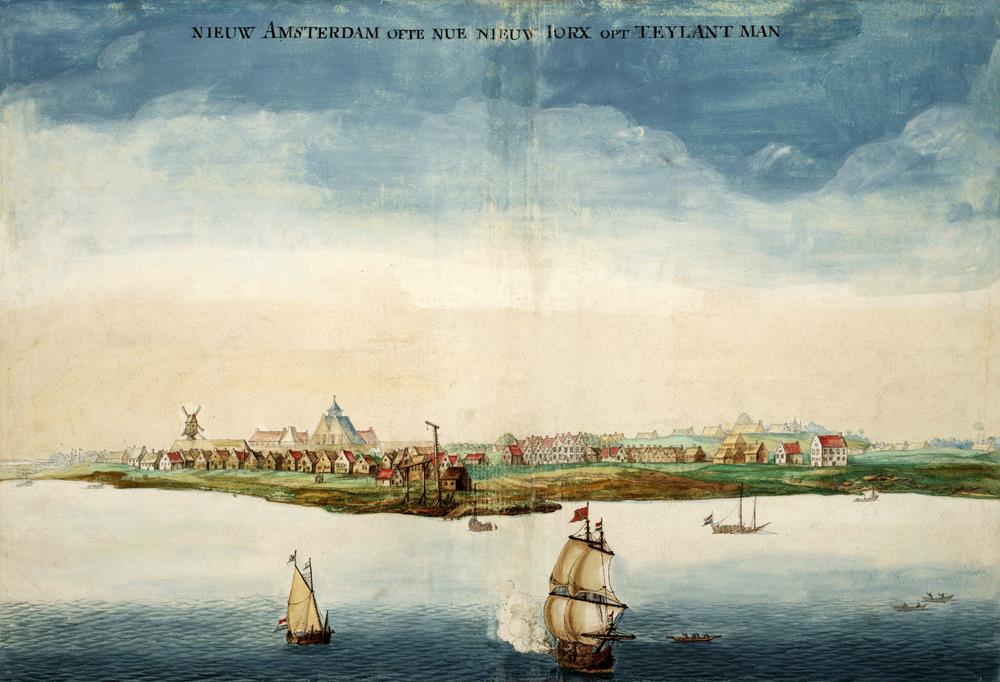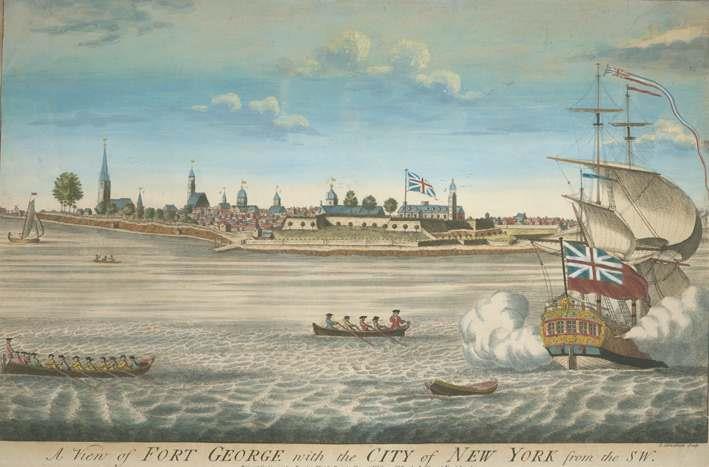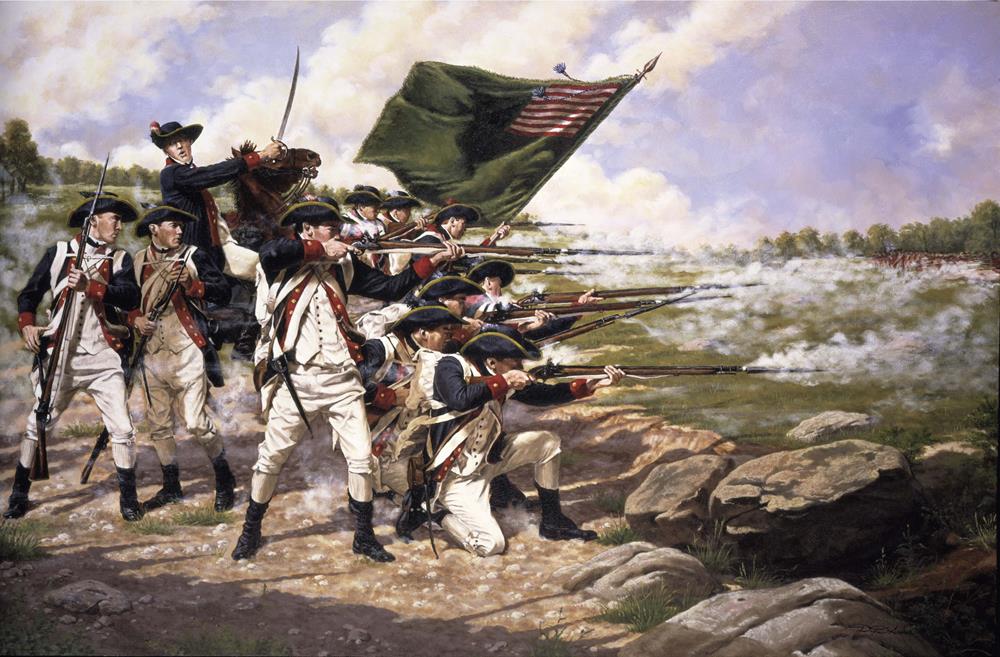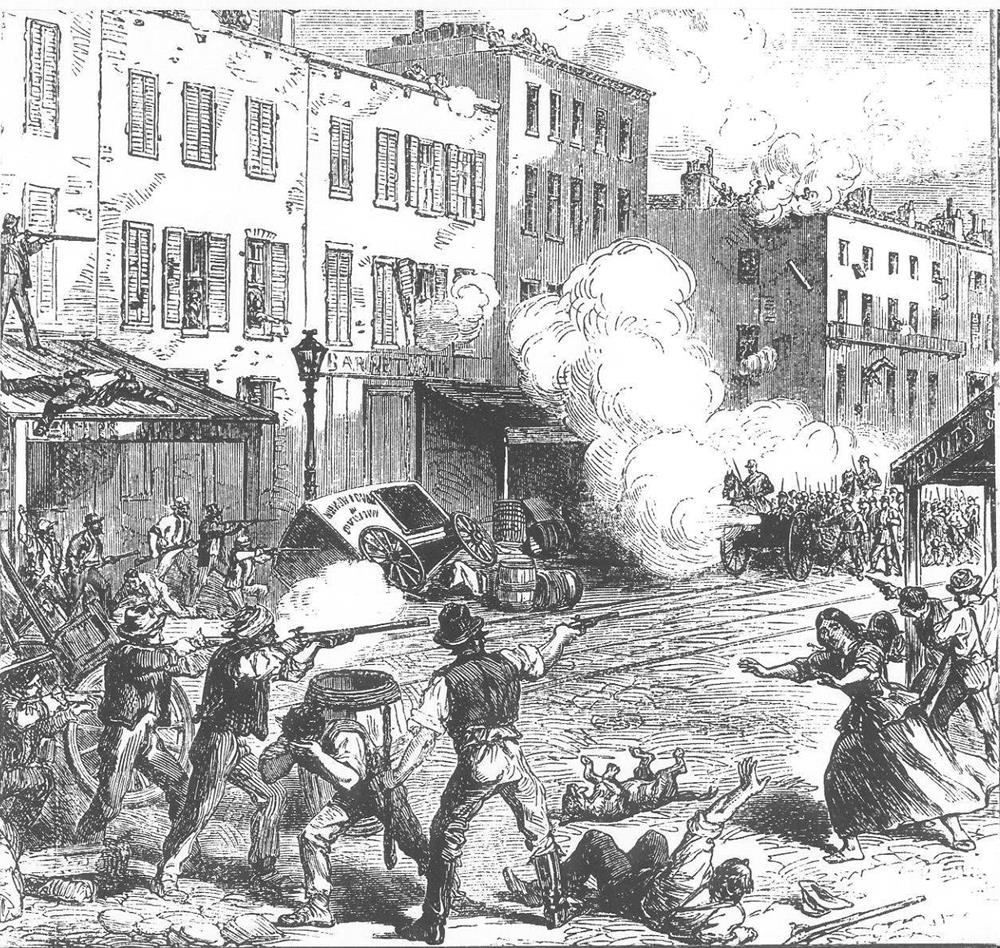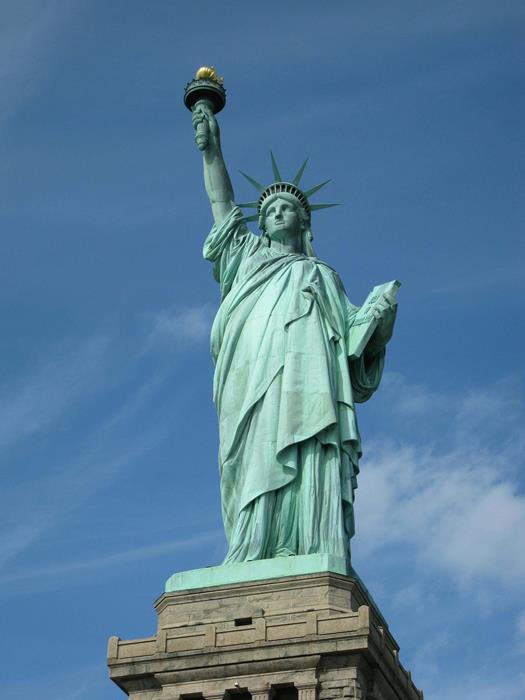New York City, a name that resonates with energy, diversity, and history. This metropolis, often hailed as the “City that Never Sleeps,” embodies a rich tapestry of stories stretching back centuries. In this blog post, we journey through time to explore the fascinating history of New York City, a tale of transformation, resilience, and relentless spirit.
The Lenape and the Beginnings of New York City
Before the soaring skyscrapers and bustling streets, the area we now know as New York City was the homeland of the Lenape people. This indigenous group, part of the Algonquian language family, thrived in Lenapehoking – a land encompassing modern-day Staten Island, Manhattan, the Bronx, western parts of Long Island (including Brooklyn and Queens), and the Lower Hudson Valley. Their connection to this rich and diverse landscape was profound, living in balance with the rivers, forests, and the abundant resources of the region.
The French Arrival (1524)
The first European eyes to gaze upon these shores belonged to Giovanni da Verrazzano, an explorer from Florence in the service of the French crown. In 1524, Verrazzano sailed into New York Harbor, claiming this newfound land for France and naming it Nouvelle Angoulême (New Angoulême). His arrival marked the beginning of a new era, intertwining the destinies of Europe and this New World.
Spanish Expeditions (1525)
A year later, in January 1525, a Spanish expedition led by the Portuguese captain Estêvão Gomes, sailing under Emperor Charles V, arrived in New York Harbor. Gomes charted the mouth of the Hudson River, christening it Río de San Antonio (Saint Anthony’s River). This marked yet another pivotal moment in the early history of the region, as European powers began to take interest in its potential.
The Dutch Influence
The story takes a significant turn in 1609 when Henry Hudson, an English explorer employed by the Dutch East India Company, rediscovered New York Harbor during his quest for the Northwest Passage to the Orient. Sailing up the North River, now known as the Hudson River, Hudson was struck by the natural beauty and the strategic potential of the area. He famously named it Mauritius in honor of Maurice, Prince of Orange. His first mate’s description of the harbor as “a very good Harbour for all windes” and the river as “a mile broad” and “full of fish” encapsulated the allure of this new land.
Hudson’s claim of the region for the Dutch East India Company marked a turning point. By 1614, the area extending from Cape Cod to Delaware Bay was claimed by the Netherlands and named Nieuw-Nederland (New Netherland).
In the winter of 1613-14, Juan Rodriguez, a merchant from Santo Domingo, became the first non-Native American inhabitant of what would become New York City. Representing the Dutch colonists, he spent the winter trapping for pelts and trading with the Lenape, bridging two worlds in a period of significant transformation.
The Dutch Legacy in New York
In 1624, the Dutch set the stage for New York’s future, establishing a fur trading post on Governors Island. This marked New York as the 12th oldest continuously occupied European-established settlement in the continental United States. A year later, the Dutch began constructing Fort Amsterdam on what is now Manhattan Island, laying the foundations of New Amsterdam, a colony that would evolve into the bustling epicenter of Lower Manhattan.
Centered around modern-day Wall Street, New Amsterdam stretched from the southern tip of Manhattan. The Dutch, wary of Native American and English threats, erected a 12-foot wooden stockade in 1653, a precursor to the famed Wall Street. The colony, however, was more than a mere fortification. In 1626, Peter Minuit, acting for the Dutch West India Company, famously purchased Manhattan from the Canarsie, a Lenape band, for 60 guilders – roughly $900 in 2018. This transaction, often mythologized as a mere $24 worth of glass beads, was a significant moment in the city’s nascent history.
New Amsterdam’s growth was initially slow. To spur development, the Dutch introduced the patroon system in 1628, granting large land parcels and trading privileges to patrons who could bring settlers. Despite its limited success, this system was a key step in the colony’s expansion. The Dutch West India Company, operating since 1621 under a monopoly, opened the fur trade to private enterprises in 1639-1640, diversifying the colony’s economy to include food, timber, tobacco, and, regrettably, slaves.
In 1647, Peter Stuyvesant arrived as the director general. Under his leadership, the population soared from 2,000 to 8,000, signifying a period of substantial growth. Stuyvesant, known for his authoritarian rule, instituted various reforms and regulations, including those on liquor and religious practices. His attempts to dominate the Dutch Reformed Church and suppress other religious groups led to tensions, prompting the Dutch West India Company to intervene.
The English Conquest and the Birth of New York City
In 1664, the tides of power shifted in New Amsterdam as English troops, led by Colonel Richard Nicolls, approached the colony. Peter Stuyvesant, faced with the overwhelming might of the English and unable to muster significant resistance, surrendered without bloodshed. This momentous event marked a turning point for the colony; the terms of surrender allowed Dutch residents to stay and guaranteed religious freedom, showcasing a relatively peaceful transition of power.
The colony’s fate was sealed internationally in 1667 with the Treaty of Breda, concluding the Second Anglo-Dutch War. In a significant trade-off, the Dutch retained control over the colony of Suriname in South America, while the English kept New Amsterdam. The settlement was promptly renamed New York in honor of the Duke of York, the future King James II and VII. Additionally, the area known as Fort Orange, situated 150 miles north along the Hudson River, was renamed Albany, reflecting the Duke’s Scottish title.
Brief Dutch Reclamation and Final English Rule (1673-1674)
In a twist of events, during the Third Anglo-Dutch War in 1673, the Dutch, led by Anthony Colve, recaptured the city, renaming it New Orange in honor of William III, the Prince of Orange. However, this Dutch resurgence was short-lived. Under the Treaty of Westminster in November 1674, New Orange was ceded back to the English, reinstating the name New York permanently.
The English takeover and subsequent events significantly impacted the indigenous Lenape population. Between 1660 and 1670, intertribal wars and European-introduced epidemics drastically reduced their numbers, with the Lenape population dwindling to around 200 by 1700. Additionally, New York grappled with several yellow fever epidemics in the 18th century, further impacting the population.
A Growing Hub of Trade and Slavery (Early 18th Century)
As a trading port, New York’s importance surged in the early 18th century. It became a center of slavery, with 42% of households owning African slaves by 1730. Slavery was integral to the city’s economy, supporting its port, banking, and shipping industries. During the 1990s, the discovery of the African Burying Ground in Foley Square, containing thousands of graves of colonial-era Africans (both enslaved and free), highlighted this dark aspect of the city’s history.
Pioneering Freedom and Education
Despite its challenges, New York also became a birthplace for crucial societal advancements. The 1735 trial and acquittal of John Peter Zenger in Manhattan established a precedent for freedom of the press in North America. In 1754, further enriching the city’s cultural and educational landscape, Columbia University was founded as King’s College by a charter from King George II.
Revolutionary Era and the Birth of a Nation
As the winds of change blew across the colonies, New York City became a pivotal stage for the unfolding American Revolution. The Stamp Act Congress convened here in October 1765, signifying the city’s emerging role in colonial resistance. This period also saw the rise of the Sons of Liberty, a group that frequently clashed with British troops over the next decade, setting the stage for the larger conflict to come.
Battle of Long Island (1776)
In August 1776, the Battle of Long Island, the largest battle of the American Revolutionary War, unfolded within what is now the borough of Brooklyn. This critical battle ended in a British victory and led to the fall of New York City to British forces. The Continental Army, led by George Washington, suffered a significant defeat at the Battle of Fort Washington in November 1776, leading to their retreat across the Hudson River to New Jersey, with British forces in pursuit.
Following their victory, the British transformed New York City into their military and political base in North America. The city became a refuge for Loyalist refugees and a beacon of hope for escaped slaves, who were promised freedom by the Crown. This influx of up to 10,000 escaped slaves made New York the continent’s largest community of free African Americans during the British occupation. When the British eventually evacuated New York in 1783, they transported thousands of these freedmen to new lives in Nova Scotia, England, and the Caribbean.
Diplomatic Efforts and the Great Fire of New York (1776)
The American attempt to negotiate a peaceful resolution to the conflict took place at the Conference House on Staten Island in September 1776, involving delegates like Benjamin Franklin and British General Lord Howe. During the early period of British occupation, the city also suffered the Great Fire of New York, which decimated nearly 500 buildings, including Trinity Church.
New York City as the National Capital (1785-1790)
In the post-revolutionary period, New York City played a crucial role as the national capital. The assembly of the Congress of the Confederation made it the national capital in January 1785. New York hosted numerous historic events in 1789, including the inauguration of George Washington as the first President of the United States and the assembly of the first United States Congress and Supreme Court. The United States Bill of Rights was also drafted here, all of which occurred at Federal Hall on Wall Street.
Growth and Change
New York City experienced explosive growth in the 19th century, with its population increasing from 60,000 to 3.43 million. This era was marked by its role in slavery. New York State’s gradual emancipation act of 1799 began the slow process of freeing enslaved people, but it wasn’t until 1827 that slavery was completely abolished in the state. This led to a significant free Black population in Manhattan, with notable figures like Alexander Hamilton and John Jay advocating for abolition and education for Black children through institutions like the African Free School.
New York City also became a national and international trading center, thanks to the Commissioners’ Plan of 1811 that expanded the street grid and completed the Erie Canal in 1825.
The influx of immigrants, particularly from Ireland and Germany, changed the city’s demographic and cultural landscape. Influential literary figures of the time, including Edgar Allan Poe and Herman Melville, called New York home, and the establishment of Central Park in 1857 marked a significant milestone in urban public spaces.
New York City in the American Civil War Era
As the American Civil War tore the nation apart, New York City found itself in a precarious position. Its deep economic ties to the South and the dominant Democratic Party led to complex political and social dynamics. In 1861, Mayor Fernando Wood even proposed that the city should declare independence from both Albany and the United States in the wake of the Southern states’ secession, a notion that was never acted upon but highlighted the city’s conflicted allegiances.
The Draft Riots of 1863
The tension in New York City came to a head with the introduction of new military conscription laws during the Civil War, which allowed wealthier men to avoid the draft by hiring substitutes. This policy incited intense resentment, particularly among the city’s ethnic Irish working class, leading to the infamous Draft Riots of 1863. The riots, which began as a protest against conscription, quickly spiraled into violent class and racial conflicts.
The Draft Riots soon transformed into brutal attacks on the city’s elite and Black residents, fueled by a decade of fierce competition for jobs between Irish immigrants and Black people. In a horrifying act of violence, rioters burned the Colored Orphan Asylum to the ground. Thankfully, more than 200 children escaped unharmed, thanks to the efforts of the New York Police Department, which was predominantly composed of Irish immigrants.
The Aftermath
The Draft Riots of 1863 rank among the worst incidents of civil unrest in American history, with at least 120 people killed. The violence was particularly brutal towards Black residents, with eleven Black men lynched over five days. The riots had a profound impact on the city’s demographic landscape. Hundreds of Black residents fled for safety, causing the Black population in Manhattan to plummet below 10,000 by 1865. The White working class, particularly longshoremen, asserted their dominance, especially in the dock areas, where violence against Black men was notably fierce.
New York in the Late 19th and 20th Century
The Statue of Liberty and Immigration (Late 19th – Early 20th Century)
During the end of the 19th century, New York City dedicated the Statue of Liberty in 1886, a gift from France symbolizing liberty and peace. This iconic statue welcomed around 14 million immigrants through Ellis Island, emblematic of America’s ethos of welcoming the tired, poor, and huddled masses yearning to breathe free.
Formation of Modern New York City
In 1898, the consolidation of New York formed the City of New York as we know it today, combining Brooklyn, parts of the Bronx, Richmond, and western Queens. The 1904 inauguration of the New York City Subway unified these diverse areas, facilitating their growth into a single, cohesive urban entity.
During this time, New York City became a central destination for African Americans fleeing the segregation of the South, known as the Great Migration. By 1916, it was home to the largest urban African diaspora in North America. This era saw the flowering of the Harlem Renaissance, a cultural movement celebrating African American art, music, and literature.
The Roaring Twenties and the Great Depression
The city’s population explosion in the 1920s made it the world’s largest urbanized area, surpassing London. During this time, jazz, prohibition and the economic boom defined the life of New Yorkers. The 1930s saw it become the first megacity in human history, with a metropolitan area population exceeding 10 million. However, the Great Depression brought significant changes, including the rise of reformer Fiorello La Guardia as mayor and the decline of Tammany Hall’s political dominance.
Post-World War II Boom and Global Influence (1940s-1950s)
The post-World War II era was a time of economic prosperity. Returning veterans spurred the development of housing in Queens and Nassau County. New York solidified its status as the world’s leading city, with Wall Street anchoring its position as a global financial powerhouse. The completion of the United Nations headquarters in 1952 underscored the city’s geopolitical significance, and the emergence of abstract expressionism marked its ascendance as the center of the art world.
Civil Rights Movement and the Stonewall Riots (1960s-1970s)
In 1969, the Stonewall riots became a defining moment in the LGBTQ+ rights movement. These spontaneous protests against a police raid at the Stonewall Inn in Greenwich Village catalyzed the fight for LGBT equality, with significant contributions from the transgender community. These civil rights movements challenged the resilience of the city, yet it emerged stronger and more diverse.
Fiscal Crisis and Recovery (1970s-1990s)
The 1970s saw New York City grappling with economic challenges and rising crime rates, culminating in the 1975 fiscal crisis. President Ford’s denial of federal assistance was famously paraphrased as “FORD TO CITY: DROP DEAD.” However, the city recovered in the 1980s, bolstered by a resurgence in the financial industry. Crime rates began to drop dramatically in the mid-1990s, due to new policing strategies, economic growth, gentrification, and a diverse influx of new residents.
New York City in the 21st Century
The dawn of the 21st century was greeted with grand celebrations in Times Square, marking the advent of Y2K. The iconic location, known for its vibrant energy, was a fitting stage for the city to welcome a new era.
The September 11, 2001 Attacks
One of the most profound moments in New York City’s recent history came on September 11, 2001. The city faced the brunt of the economic impact and the greatest loss of life in the aftermath of these attacks. The World Trade Center’s Twin Towers were struck by hijacked airliners, leading to their catastrophic collapse and the tragic loss of 2,753 lives, including 343 brave first responders from the New York City Fire Department and 71 law enforcement officers. The North Tower holds the somber distinction of being the tallest building ever destroyed.
Rebuilding and Remembering
Out of tragedy rose a spirit of resilience and renewal. The area was thoughtfully rebuilt with a new World Trade Center complex, including the National September 11 Memorial and Museum. The new One World Trade Center, standing as the tallest skyscraper in the Western Hemisphere and the seventh tallest in the world, reaches a symbolic height of 1,776 feet, commemorating U.S. independence. This redevelopment not only transformed the skyline but also served as a poignant symbol of recovery and remembrance.
Occupy Wall Street Protests
The Occupy Wall Street protests, beginning on September 17, 2011, in Zuccotti Park, brought global attention to issues of social and economic inequality. This movement, originating in the financial heart of Lower Manhattan, resonated worldwide, sparking discussions and movements against systemic inequities.
Hurricane Sandy (2012)
In late October 2012, New York City faced one of its most significant natural disasters with Hurricane Sandy. The storm’s severe flooding caused unprecedented damage, leading to a shutdown of the subway system, inundation of tunnels, and the closure of the New York Stock Exchange for two days due to weather – a first since the Great Blizzard of 1888. The city mourned the loss of at least 43 lives and bore economic losses estimated at $19 billion. This disaster led to an increased focus on climate change and infrastructural resilience, with significant federal funding directed towards these efforts.
The COVID-19 Pandemic (2020-2023)
In March 2020, New York City confirmed its first case of COVID-19 in Manhattan. The city, dense in population and a nexus for global travel, rapidly became the global epicenter of the pandemic. This crisis put immense strain on the city’s healthcare infrastructure. By March 2023, the city had recorded over 80,000 deaths from COVID-19-related complications, a sobering reminder of the pandemic’s devastating impact.
Conclusion
New York City’s history is a narrative of continual transformation, marked by resilience and a unique ability to reinvent itself. From the native Lenape to the diverse populace of today, each era has contributed to the city’s extraordinary tapestry. This city, in its essence, is a testament to the human spirit’s unyielding drive to create, overcome, and thrive.

